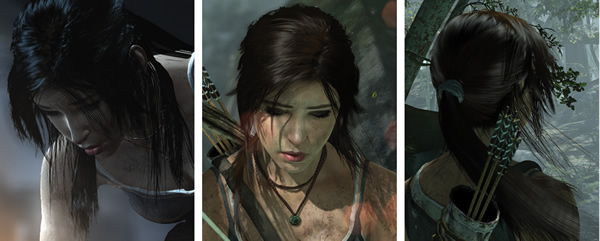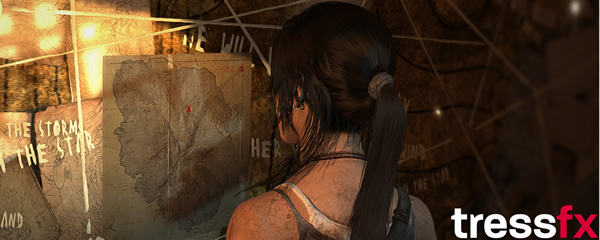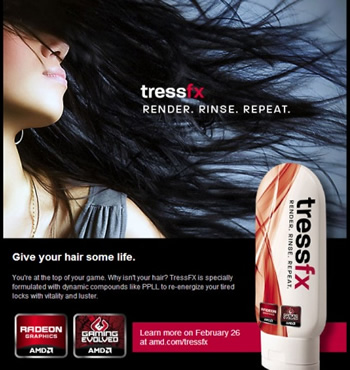Earlier this week, some of you may have seen the teasers regarding AMD's TressFX physics and rendering technology. Today, the chip-maker unveiled details about TressFX – its new toolset for creating life-like locks. The system promises a future where rendered hair features both realistic looks and equally realistic movements.
TressFX is the fruit of a partnership between AMD and Crystal Dynamics – the game studio who managed to snag control of the iconic Tomb Raider franchise roughly a decade ago. Not surprisingly, the next Tomb Raider installment – essentially a franchise reboot – depicts the tomb-diving heroine Lara Croft with flowing locks of finely rendered hair, rather than her trademark bundle of hair-like blocks.
Hair found throughout the history of gaming titles has traditionally been a collection of some low-number of polygons with a hair-like texture mapped over top of it. TressFX creates a system where developers can have thousands of individual, flexible "strands" of hair that can be influenced by gravity, wind, movement and even moisture. The strands are treated as solid constructs, unable to clip past other objects. This should make the perceivable results of TressFX particularly realistic.

AMD's sophisticated hair tools are based on its previous work with Order Independent Transparency (OIT), making use of Per-Pixel Linked-List (PPLL) data structures to manage memory usage and rendering complexity. TressFX also leverages the massively-parallel processing power afforded by DirectCompute, taking full advantage of AMD's GCN-based hardware.

Although AMD doesn't say specifically, Nvidia's line-up also supports DirectCompute and OIT (pdf). This may suggest TressFX will work across a broader variety of GPUs than just AMD Radeons. However, it's a safe bet that TressFX will work best, if not exclusively, with Radeon GPUs.

